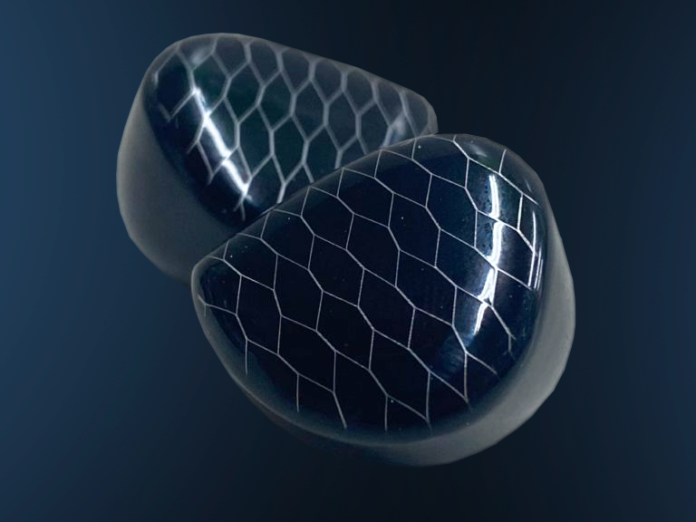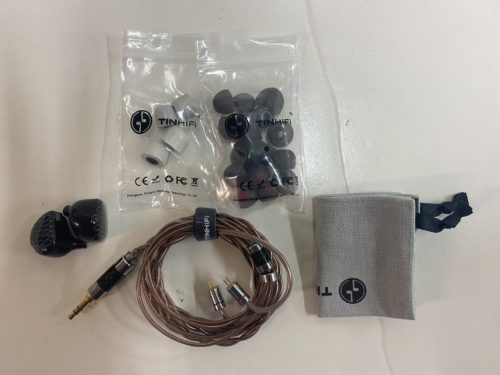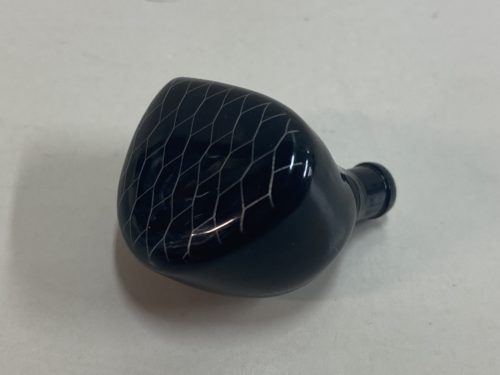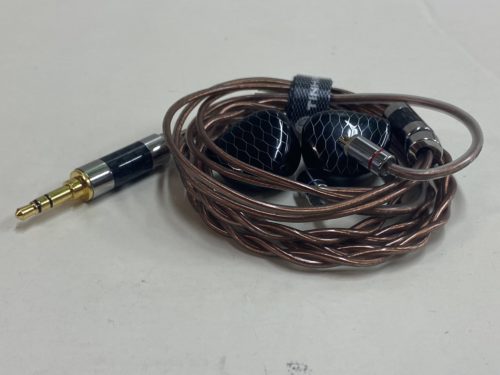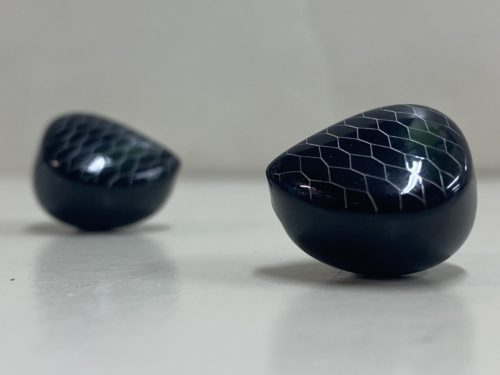Throughout this year, I have got to listen to a large variety of IEMs with planar drivers. Some of them have been a few of my favorites I have heard this year, and their pricing has gotten incredibly reasonable. Tin HiFi already has a few planar IEMs under their belt, like the P1 and P2 Plus, which I reviewed this year. I’ve been recently listening to their P1 Max, or Giant Panda as it also goes by, which is another planar IEM from the same brand for $169. Does it stack up to Tin HiFi’s already successful library of planar IEMs?
What You Get
- P1 Max IEMs
- 2-pin 3.5mm cable
- Drawstring carrying pouch
- Eight sets of silicone ear tips
- Two sets of foam tips
Look and Feel
On the outside, the P1 Max takes the standard shape of most ergonomic IEMs. It is a simple but graceful design that utilizes both hand-crafted and 3D-printed materials. The glossy outside has a nice jewel finish to add a bit of spice to the design for some stylistic flourish. When the Max is in your ear, it feels natural and light, giving you maximum comfort for endless hours of listening.
Design
This planar driver is a 14.5mm unit, with a thin aluminum diaphragm and a double-sided array N52 magnet. A design like this aims to deliver a larger magnetic flux for a snappier response that covers a wider range of frequencies. The cable is made from 108 single crystal copper wire cores, with a 3.5mm termination and 2-pin connectors.
- Sensitivity: 98±3dB @1kHz 0.126V
- Frequency Response: 10-20kHz
- Impedance: 16Ω±15%
Soundstage
There is a wide selection of planar IEMs out there, and in my experience, there is only a handful of them that truly have that specific profile. For instance, many planar headphones have nice wide soundstages that are accurate and semi-holographic. Although a lot of planar IEMs are good, some of them sound distinctly more planar-like than others. The P1 Max is one of those IEMs.
Its stereo imaging is not just wide but the sound elements are granted a good amount of depth in their performance. You have a natural amount of separation that doesn’t the space between the left and right channels seem too stretched out either. The imaging has a clear and consistent flow to it that feels constantly engaging to listen to with various genres of music. In a sense, the imaging helps a lot of tracks feel engrossing, the music is surrounding you even in a traditional stereo field.
Low End
While diving deep into a pool of sub-bass, the P1 Max provides the groundwork for the lows. There’s a level of fullness in the bass that gives the Max an impactful tone, with some excellent extension that feels like a hammer coming down. Even with its wealth of power, the actual bass timbre still comes off clean and controlled. The bass frequencies are positioned in such a way that you shouldn’t have any interference or bleed with the mid-bass. It is impressive that this planar bass response does such a great job of enriching its low-end display while also showcasing depth and clarity.
Mids
I was greatly impressed by the Max’s completely unveiled fidelity, supplying a crisp resolution throughout its timbre. Its tone feels as big as the bass but on a more linear sound field. The frequencies are playful and transparent while emphasizing certain frequency bands to add flavor to the instrumentals and vocals. Musically, this is a realistic portrayal of the tracks, but certain vocal ranges feel like they’re given slightly more priority with their forward response. Female vocals in particular have a nice sheen to them, appearing sweet and resolving in their timbre.
Highs
The highlight of listening to the P1 Max for me was getting to listen to these glistening highs. These frequencies have an easy-to-digest tone, but they splash across the frequency spectrum with sparkle and finesse. Another crisp area of the frequency response that wonderfully showcases the delicate details of the treble. They give the sound signature extra height and airy qualities that softens the brightness of the tone while still delivering that pristine resolution.
Summary
Tin HiFi has a ton of good stuff, and the P1 Max might be one of the best efforts I have heard from them so far. It is surprising at such a low price, that Tin HiFi can construct such a rich-sounding planar IEM that can compete with some of the best budget and mid-fi earphones on the market. Of course, there is room to upgrade at some point, but the P1 Max will surely keep you happy for a long time.

The Tin HiFi P1 Max is available from Linsoul.
MAJORHIFI may receive commissions from retail offers.


